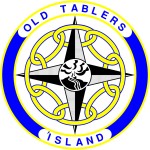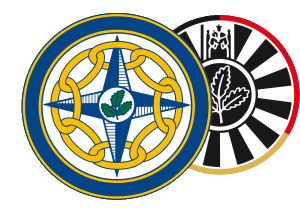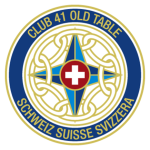18 Frequently asked Questions
1. What do 41 Club members do? Just meet, eat and drink? How often do they meet? What are the activities of a 41 Club?
The concept of the 41 Club movement is to continue the friendships formed during Tabling years. Besides having regular meetings, at least once per month, 41 Club plays a supportive role to their Round Table. Activities include meals, travelling and visits, joint socials with other 41 Clubs, sports events such as golf and the occasional formal dinner dance.
The concept of the 41 Club movement is to continue the friendships formed during Tabling years. Besides having regular meetings, at least once per month, 41 Club plays a supportive role to their Round Table. Activities include meals, travelling and visits, joint socials with other 41 Clubs, sports events such as golf and the occasional formal dinner dance.
2. How is the relationship between Round Tables and 41 Clubs?
It is often said that the future of Round Tables is 41 Clubs and the future of 41 Clubs is Round Tables. 41 Clubs support Round Tables by helping in their Community service projects, in forming new clubs and in joint fellowship events.
It is often said that the future of Round Tables is 41 Clubs and the future of 41 Clubs is Round Tables. 41 Clubs support Round Tables by helping in their Community service projects, in forming new clubs and in joint fellowship events.
3. What is the structure of a 41 Club?
It is governed by its own rules that are in the line with that of their National Association. They elect their Chairman, Vice Chairman and Secretary who run the club. Only members who have attained the age of 40 (in some countries 45) are admitted to the club.
It is governed by its own rules that are in the line with that of their National Association. They elect their Chairman, Vice Chairman and Secretary who run the club. Only members who have attained the age of 40 (in some countries 45) are admitted to the club.
4. Why doesn’t the organisation have a name depicting Tabling instead of the number 41?
The Round Table has its own identity and would not like to confuse their prospective members with another group of older people with similar club name.
The Round Table has its own identity and would not like to confuse their prospective members with another group of older people with similar club name.
5. How do you manage the age gap in 41 Clubs (between new members in the age group 40-50 and older ones in their 60s or 70s)?
Most clubs manage well by having a wide variety of activities, but if a club has mostly older members a newly entering member may feel out of place, so the newer members from the same Round Table can form another club of their contemporaries.
Most clubs manage well by having a wide variety of activities, but if a club has mostly older members a newly entering member may feel out of place, so the newer members from the same Round Table can form another club of their contemporaries.
6. Is there a specific mandatory design for the 41 logo?
Yes, the full explanation is:
Yes, the full explanation is:
The logo or badge shall consist of a circular logo, the centre of which represents the sun, from which the four main cardinal points extend outwards with the north and south cardinal points entering in front and the east and west cardinal points entering behind a continuous chain of eight links. The chain shall be in gold, each link being outlined in black and each cardinal point in mid-blue with the left half in dark-blue shading, the whole being on a white background.
These in turn shall be enclosed in three concentric rings, the inner and outer of which shall be thin and in gold whilst the middle ring shall be broad, in mid-blue. The widths of the centre, of the north-south and east-west cardinals and of the inner edge of the broad ring shall not exceed one tenth, two thirds and three quarters respectively of the diameter of the logo.
The centre of the logo of each country will vary according to their national preference.
The International logo and three member Association logos are given below.
These in turn shall be enclosed in three concentric rings, the inner and outer of which shall be thin and in gold whilst the middle ring shall be broad, in mid-blue. The widths of the centre, of the north-south and east-west cardinals and of the inner edge of the broad ring shall not exceed one tenth, two thirds and three quarters respectively of the diameter of the logo.
The centre of the logo of each country will vary according to their national preference.
The International logo and three member Association logos are given below.




International Iceland Germany Switzerland
7. What is the difference between affiliated and non-affiliated 41 Associations?
An affiliated National Association has the following privileges which the non-affiliates do not have:
1. Affiliate country is represented by Councillors at the meeting of 41 INTERNATIONAL where they have the right to vote on resolutions, elect International Officers and participate in discussions and workshops.
2. Children and grandchildren of members of affiliated Associations can participate in the Young Ambassador Programme of 41 International.
3. Affiliated members can lead the organisation in its various capacities.
4. Affiliate Associations can host Half Yearly and Annual meetings of 41 INTERNATIONAL.
5. The International President participates in the AGM of affiliated member countries.
6. Only affiliated members are eligible for various recognitions and awards.
An affiliated National Association has the following privileges which the non-affiliates do not have:
1. Affiliate country is represented by Councillors at the meeting of 41 INTERNATIONAL where they have the right to vote on resolutions, elect International Officers and participate in discussions and workshops.
2. Children and grandchildren of members of affiliated Associations can participate in the Young Ambassador Programme of 41 International.
3. Affiliated members can lead the organisation in its various capacities.
4. Affiliate Associations can host Half Yearly and Annual meetings of 41 INTERNATIONAL.
5. The International President participates in the AGM of affiliated member countries.
6. Only affiliated members are eligible for various recognitions and awards.
8. How many official events do you have in 41 INTERNATIONAL?
Each calendar year, the Annual General Meeting takes place in the spring, while the Half-Yearly Meeting takes place in the Autumn (in the Northern hemisphere).
Each calendar year, the Annual General Meeting takes place in the spring, while the Half-Yearly Meeting takes place in the Autumn (in the Northern hemisphere).
9. When was the 41 Club movement started? When was the International Association formed? What is the history of the 41 Clubs?
Tracing the history of the name and policies of 41 INTERNATIONAL (A Précis of the original essay by Past President Wolfgang Roesel)
Tracing the history of the name and policies of 41 INTERNATIONAL (A Précis of the original essay by Past President Wolfgang Roesel)
1945- Clubs of former members of Round Table in GB&I came together to form a new organisation, to continue to cultivate friendship previously established in Round Table. The new organisation called itself “The Association of Ex-Tablers’ Clubs”.
1965- This philosophy found favour in Germany and the club “Old Tablers Number 1” was founded in Berlin.
As Ex-Tablers clubs became established beyond the borders of the GB&I in the 1960s, the Association soon began to assume the role of an international organisation:
1961- French Ex-Round Tablers’ clubs initiated a new development in continental Europe. Club 41 Francais was founded in Brest. They decided to generally admit members over 40, even if they had previously not been members of a Round Table Club.
1975- A meeting was held in the French town of Le Touquet to make decisions regarding the founding of an international umbrella organisation- 41 INTERNATIONAL.
1982- France started admitting non Ex- Tablers to their clubs.
1991- GB&I leaves the organisation in protest.
1994- GB&I returns to 41 INTERNATIONAL with the condition that, in future, no Non Ex-Tablers were to be admitted to the French Club 41. Whoever had been admitted up to this time was allowed to remain. At the meeting of all international delegates, this was recorded in the Articles of Association.
2002- France proposed a motion to admit non Ex-Tablers, which failed, so France resigned. A postal ballot of all nations permitted the inclusion of non Ex-Tablers into 41 INTERNATIONAL in order to keep the French in the organisation.
2006- A non Ex-Tabler was elected as French IRO, so France brought a motion about a rule change to permit non Ex-Tablers to be Councillors and be eligible for all posts of 41 INTERNATIONAL. France resigned following failure of the motion.
1965- This philosophy found favour in Germany and the club “Old Tablers Number 1” was founded in Berlin.
As Ex-Tablers clubs became established beyond the borders of the GB&I in the 1960s, the Association soon began to assume the role of an international organisation:
1961- French Ex-Round Tablers’ clubs initiated a new development in continental Europe. Club 41 Francais was founded in Brest. They decided to generally admit members over 40, even if they had previously not been members of a Round Table Club.
1975- A meeting was held in the French town of Le Touquet to make decisions regarding the founding of an international umbrella organisation- 41 INTERNATIONAL.
1982- France started admitting non Ex- Tablers to their clubs.
1991- GB&I leaves the organisation in protest.
1994- GB&I returns to 41 INTERNATIONAL with the condition that, in future, no Non Ex-Tablers were to be admitted to the French Club 41. Whoever had been admitted up to this time was allowed to remain. At the meeting of all international delegates, this was recorded in the Articles of Association.
2002- France proposed a motion to admit non Ex-Tablers, which failed, so France resigned. A postal ballot of all nations permitted the inclusion of non Ex-Tablers into 41 INTERNATIONAL in order to keep the French in the organisation.
2006- A non Ex-Tabler was elected as French IRO, so France brought a motion about a rule change to permit non Ex-Tablers to be Councillors and be eligible for all posts of 41 INTERNATIONAL. France resigned following failure of the motion.
2000 onwards – more International Associations have been formed and affiliated to 41 INTERNATIONAL. Kenya joined in 2022, with Nepal and Madagascar in the process of joining.
10. Is it only for Ex-Tablers?
Some countries do admit non-Ex-Tablers into their clubs.
Some countries do admit non-Ex-Tablers into their clubs.
11. Do 41 Clubs maintain minutes of their meetings?
Some do, some don’t.
Some do, some don’t.
12. What do you do to inform leaving Tablers about the 41 Club movement?
They should already know about it, but often a formal / semi formal invitation is issued by the 41 Club. Normally a tankard or a certificate of appreciation of their participation as an active Tabler is issued by their Round Table. In addition, a document about 41 Club may be provided.
They should already know about it, but often a formal / semi formal invitation is issued by the 41 Club. Normally a tankard or a certificate of appreciation of their participation as an active Tabler is issued by their Round Table. In addition, a document about 41 Club may be provided.
13. What are the rules governing the individual 41 Clubs? Which are mandatory and which are optional?
The mandatory rules are:
1. The Club must send annual data to its National Association about the number of members and details of their club officers.
2. A capitation fee per member must be paid.
Optional rules:
The number and designation of officers, date of the annual meeting, the recording of minutes, the pattern of hosting meetings etc.
The mandatory rules are:
1. The Club must send annual data to its National Association about the number of members and details of their club officers.
2. A capitation fee per member must be paid.
Optional rules:
The number and designation of officers, date of the annual meeting, the recording of minutes, the pattern of hosting meetings etc.
14. Do 41 Clubs have their own AGM in addition to the AGM of their National Association?
Yes. Most active clubs do so.
Yes. Most active clubs do so.
15. How is the age difference managed in 41 INTERNATIONAL?
In a similar way to that in individual clubs, by having a variety of activities.
In a similar way to that in individual clubs, by having a variety of activities.
16. Do you have a presentation about the 41 Movement that can be given to the graduating Tablers?
Yes. It can be downloaded from our web site.
Yes. It can be downloaded from our web site.
17. What should be the name of 41 Club? Club 41, 41 Club, Ex-Table Club or Old Tablers Club?
There is no fixed rule about this.
There is no fixed rule about this.
18. Which are the countries that have 41 Clubs? Are all 41 Clubs members of 41 INTERNATIONAL?
There are obviously Past Tablers in all countries where there are Round Tables, but quite a few, such as Lithuania, Estonia and Singapore are yet to form a 41 Club. There is an e-Club which can enrol members who are in countries with no affiliated Association.
There are obviously Past Tablers in all countries where there are Round Tables, but quite a few, such as Lithuania, Estonia and Singapore are yet to form a 41 Club. There is an e-Club which can enrol members who are in countries with no affiliated Association.
